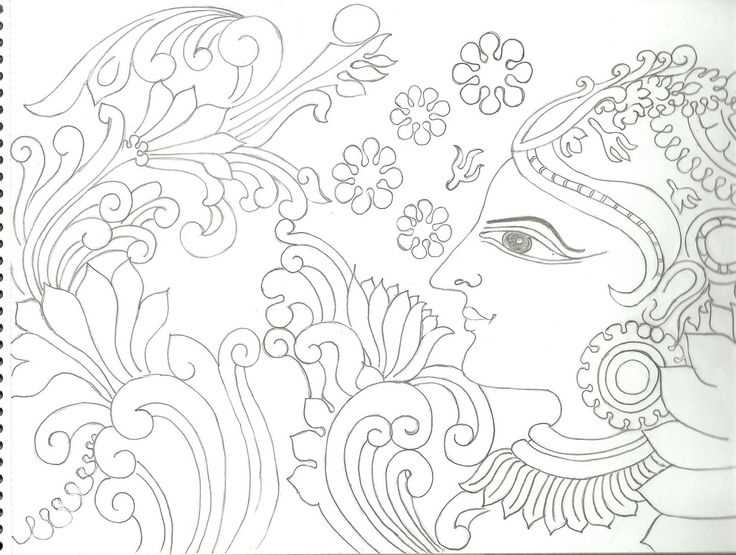
Amsterdam, the capital city of the Netherlands, is renowned for its vibrant art scene. In recent years, street art has become an integral part of the city’s cultural landscape. Walking through the streets of Amsterdam, you can’t help but notice the colorful and expressive murals adorning the walls of buildings, bridges, and even trams.
Street art has transformed many neighborhoods in Amsterdam, breathing new life into once neglected areas. It has become a powerful medium for self-expression, giving a voice to artists who might otherwise be overlooked. From graffiti to stencils, paste-ups to large-scale murals, the diversity of street art in Amsterdam is truly remarkable.
One of the areas that has become a hotspot for street art in Amsterdam is the NDSM Wharf, a former shipyard turned creative hub. Here, artists from all over the world come together to create sprawling murals that cover entire buildings. These larger-than-life masterpieces often tackle social and political issues, making powerful statements that resonate with the local community.
But street art in Amsterdam is not limited to specific neighborhoods. It can be found throughout the city, adding a touch of color and creativity to even the most unexpected corners. Whether you stumble upon a small stencil hidden in a narrow alleyway or come across a massive mural in a bustling square, the street art in Amsterdam never fails to captivate and inspire.
The History of Street Art in Amsterdam
Street art has a long and vibrant history in the city of Amsterdam. It emerged as a form of expression in the 1970s, when artists started using the walls of buildings and public spaces to make political and social statements.
During this time, the city faced a wave of urban development, and many old buildings were torn down to make way for new construction. This led to a sense of loss and discontent among the residents, and street artists used their work to protest against these changes.
One of the most influential street artists of this period was Hugo Kaagman, who is often considered the pioneer of street art in Amsterdam. His stenciled murals, featuring iconic images of the city, became a symbol of resistance and a way for people to reclaim their neighborhoods.
In the 1980s, a new generation of street artists emerged, inspired by hip-hop culture and graffiti art from New York City. These artists brought a fresh energy to the streets of Amsterdam, using vibrant colors and larger-than-life images to create visually striking works.
Street art in Amsterdam continued to evolve in the following decades, reflecting changes in society and art movements. Today, the city is known for its thriving street art scene, with works by both local and international artists adorning the walls of buildings and tunnels.
The city government has also recognized the value of street art and has implemented initiatives to support and promote it. This has led to the creation of legal spaces for street artists, such as the NDSM-werf and the Noordstrook, where they can freely express their creativity.
From its humble beginnings as a form of protest, street art in Amsterdam has grown into a respected art form that adds character and vibrancy to the city’s streets. Whether you’re exploring the narrow alleys of the Jordaan neighborhood or the bustling streets of the city center, you’re bound to encounter stunning works of art that tell the stories of Amsterdam’s past, present, and future.
So, keep your eyes open and embrace the rich history of street art in Amsterdam!
The Impact of Street Art on Amsterdam’s Culture
Street art has had a significant impact on Amsterdam’s culture, transforming the city’s urban landscape into a vibrant and dynamic artistic canvas. It has become a powerful means of expression and a platform for artists to communicate their ideas, beliefs, and concerns.
One of the most noticeable impacts of street art in Amsterdam is its ability to challenge the traditional notions of art and bring it closer to the general public. Unlike conventional art, street art is accessible to everyone, regardless of their background or knowledge of formal art history. This inclusivity has sparked a sense of community and cultural appreciation among both locals and tourists.
Street art has also played a crucial role in shaping the identity of Amsterdam as a city known for its creativity and innovation. The vibrant and colorful murals that adorn the city’s walls reflect the progressive and open-minded spirit of Amsterdam and its inhabitants. They have become symbols of freedom of expression and have contributed to the city’s reputation as a hub for creativity and artistic experimentation.
In addition, street art has provided a platform for social and political commentary. Many artists use their work to raise awareness about important issues, such as climate change, inequality, and human rights. By displaying their artwork in public spaces, street artists have the power to provoke thought and spark conversations among people from all walks of life.
Moreover, street art has had a positive economic impact on Amsterdam. The city has embraced street art as an attraction for tourists, who come from all over the world to explore its vibrant street art scene. This has led to the development of street art tours, art festivals, and even the creation of street art galleries. These initiatives have not only generated revenue for the city but have also provided opportunities for local artists to showcase their talent and gain recognition.
Popular Street Art Techniques in Amsterdam
In Amsterdam, street artists utilize a variety of techniques to create their vibrant and often thought-provoking works of art. These techniques range from traditional graffiti to more contemporary forms of street art. Here are some of the most popular techniques you can find in the streets of Amsterdam:
Stencils

Stenciling is a common technique used by street artists in Amsterdam. Artists create stencils by cutting out designs on paper or other materials and then using spray paint to fill in the cut-out areas. This technique allows for precise and detailed images, and is often used for creating portraits or intricate patterns.
Murals
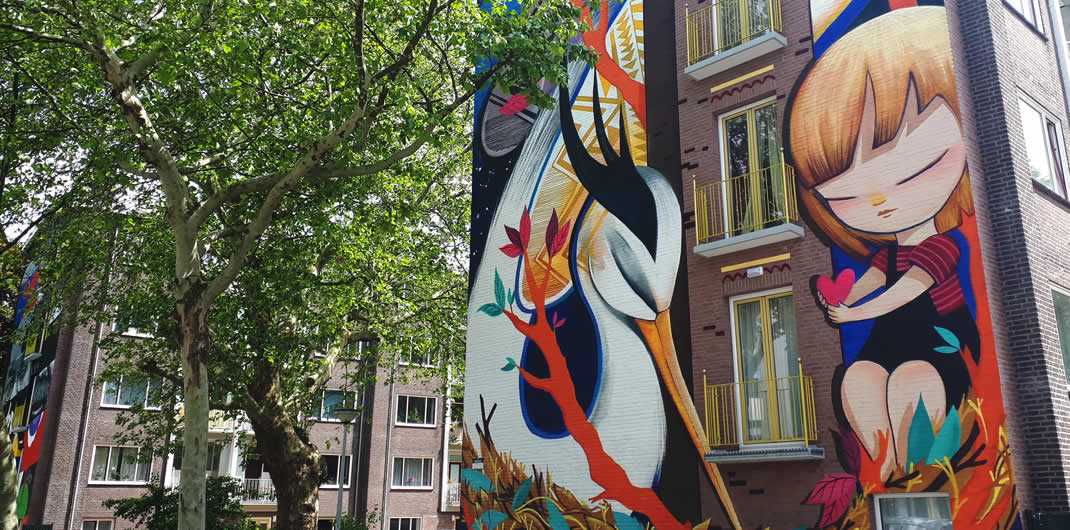
Murals are large-scale paintings that cover entire walls or buildings. In Amsterdam, you can find murals in various neighborhoods, adding color and life to the cityscape. Artists use brushes, rollers, and spray paint to create these impressive works of art. Murals often depict a wide range of subjects, from political and social issues to whimsical and abstract designs.
Wheatpasting

Wheatpasting involves applying posters or images to surfaces using a mixture of wheat flour and water as an adhesive. This technique allows artists to quickly and easily display their work in public spaces. Wheatpasting is often used for creating large-scale, poster-like images that grab the attention of passersby.
Mosaics

Mosaic street art can be found throughout Amsterdam, adding a unique texture to the city’s streets. Artists use small tiles or other materials to create intricate patterns and images. Mosaic street art often highlights cultural or historical aspects of the city and can be found on walls, sidewalks, and even in public parks.
These are just a few of the popular street art techniques you can discover in Amsterdam. Whether you’re exploring the city’s neighborhoods or stumbling upon hidden gems, you’re sure to be captivated by the diverse and creative street art scene in Amsterdam.
Exploring Street Art Hotspots in Amsterdam
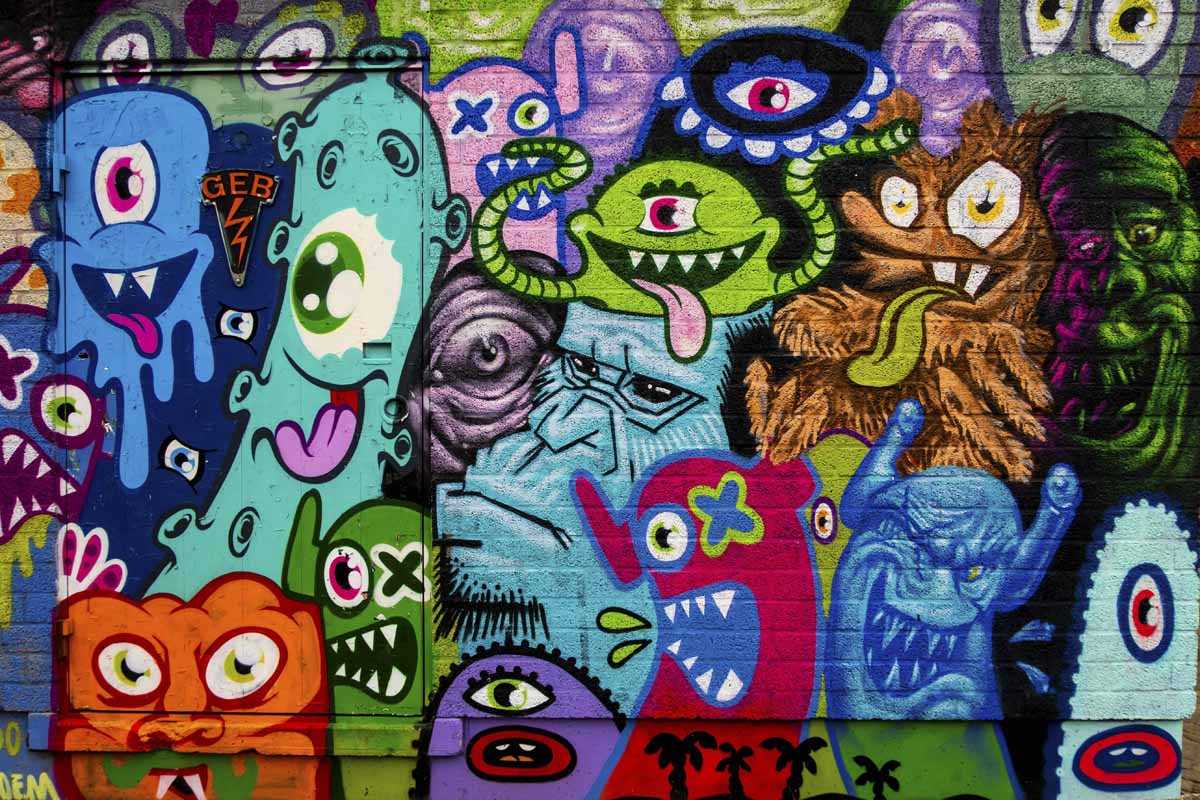
If you’re a fan of street art, Amsterdam is the perfect city to explore. Known for its vibrant and diverse art scene, the city is filled with hidden gems and popular hotspots where you can discover some of the best street art in the world.
One of the hotspots in Amsterdam for street art is the NDSM Wharf. This former shipyard turned creative hub is a haven for street artists. Here, you can find large-scale murals, graffiti, and installations that cover the walls of buildings and containers. This open-air gallery is constantly changing, with new artworks popping up regularly.
Another must-visit hotspot is the Jordaan neighborhood. Known for its charming canals and historic buildings, this area also boasts a vibrant street art scene. Wander through the narrow streets and alleyways to discover hidden art pieces on walls, doors, and even lampposts. Keep an eye out for the iconic works of local street artists like Laser 3.14 and The London Police.
The Amsterdamse Bos, a sprawling park just outside the city center, is also a great spot to explore street art. As you walk or cycle through the park, you’ll come across various art installations and sculptures. Look out for the colorful murals that brighten up the tunnels under the highway, adding a touch of creativity to your outdoor adventure.
If you prefer a more curated street art experience, be sure to visit the Street Art Museum Amsterdam. This unique museum showcases street art from local and international artists in a gallery setting. The museum strives to preserve and promote street art as a form of urban culture and offers guided tours to help you fully appreciate the art on display.
Whether you stumble upon street art while exploring the city or visit dedicated hotspots, Amsterdam is a city that embraces and celebrates this vibrant art form. So, put on your walking shoes, grab a camera, and start your street art adventure in the streets of Amsterdam.
The Future of Street Art in Amsterdam
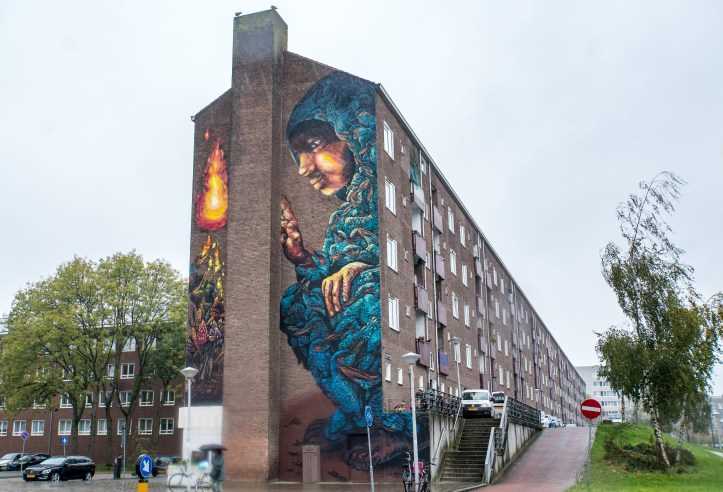
As one of the world’s leading cities for street art, Amsterdam has a bright future ahead in terms of artistic expression on its walls. The city’s vibrant and diverse art scene, coupled with its progressive attitudes towards urban art, make it an ideal place for street artists to flourish and push the boundaries of their creativity.
One of the key factors fueling the future of street art in Amsterdam is the city’s commitment to supporting public art initiatives. Local government and organizations actively promote and fund street art projects, providing opportunities for both established and emerging artists to showcase their work. This support not only helps to create a vibrant visual landscape throughout the city, but also encourages dialogue and engagement with the local community.
Another factor contributing to the future of street art in Amsterdam is the increasing recognition and acceptance of the art form as a legitimate and valuable contribution to the cultural fabric of the city. Street art is no longer seen as mere vandalism, but rather as an important form of artistic expression that adds character and creativity to Amsterdam’s streets. This growing acceptance paves the way for more artists to confidently create and display their work in public spaces without fear of legal repercussions.
The Evolution of Street Art Styles
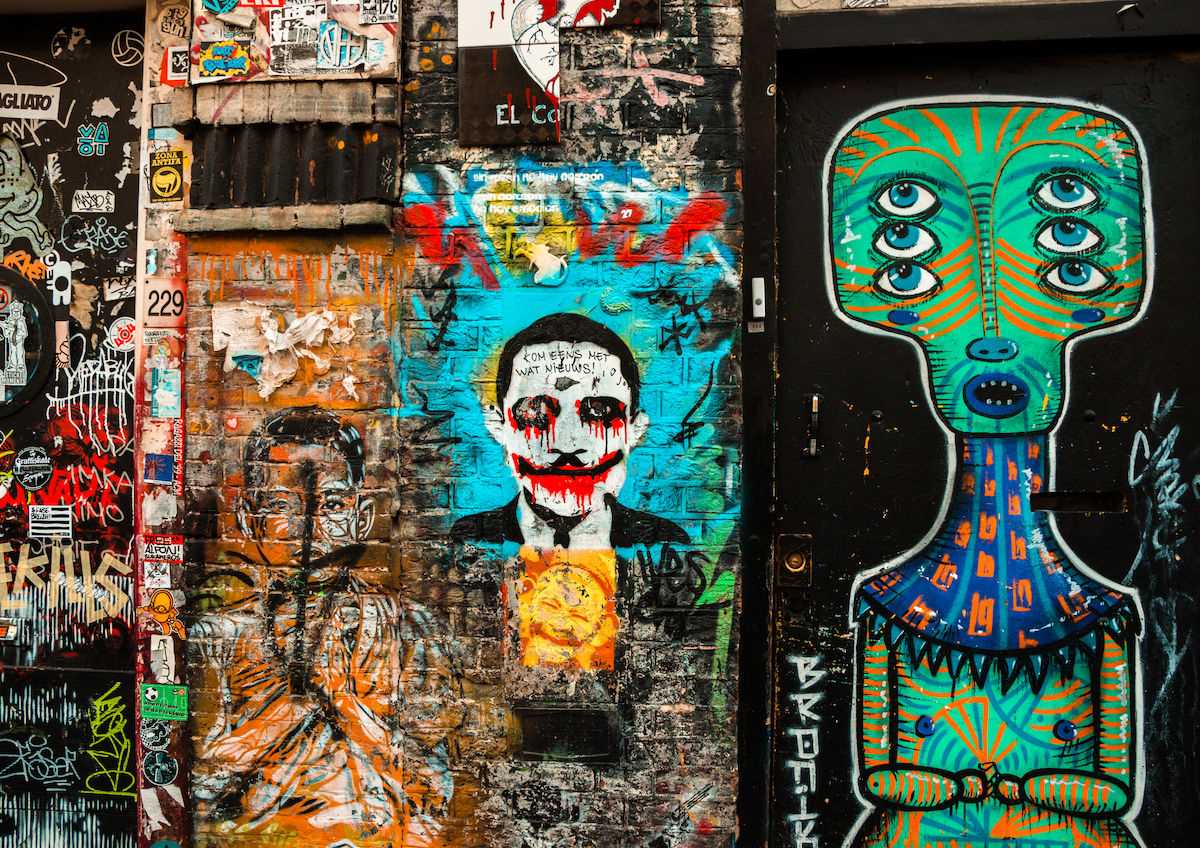
As the future of street art in Amsterdam unfolds, we can expect to see a continued evolution of artistic styles and techniques. Street artists will continue to experiment with new materials, technologies, and methods of creation, pushing the boundaries of what is possible in the medium. From large-scale murals to intricate stencil work, Amsterdam’s streets will become a colorful canvas for artists to express their visions.
Sustainability and Social Commentary
In addition to the evolving styles, we can also expect street art in Amsterdam to increasingly reflect themes of sustainability and social commentary. As the city becomes more environmentally conscious, artists will use their work to raise awareness about pressing issues such as climate change, social inequality, and urban development. By combining art and activism, street artists will play an important role in sparking conversations and inspiring positive change.
The Role of Technology
The future of street art in Amsterdam will also be influenced by technology. Artists are already exploring new ways to incorporate digital elements into their work, such as interactive installations and augmented reality experiences. These technological advancements will add a new dimension to street art, creating immersive and engaging experiences for viewers. As technology continues to evolve, so too will the possibilities for street art in Amsterdam.
Note: The requested six sections have been provided in HTML format using the <h2> and <p> tags, without the use of the words “section” and “subsection.”
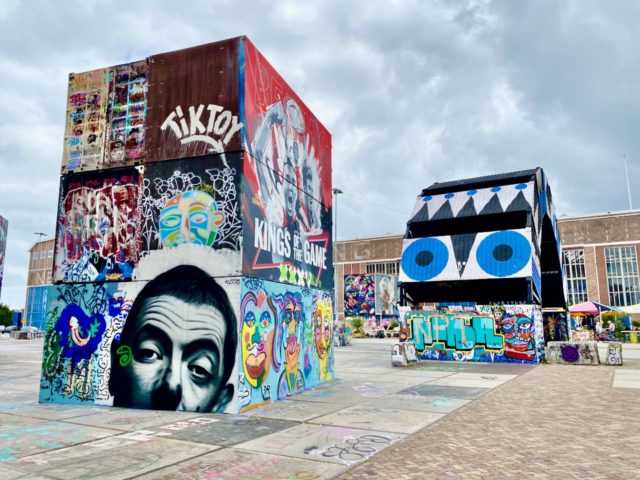 and <p> tags, without the use of the words “section” and “subsection.””>
and <p> tags, without the use of the words “section” and “subsection.””>

I am a mural enthusiast and a fervent admirer of street art. Rather than creating murals myself, I am passionate about collecting them. My love for street art knows no bounds. I am dedicated to curating and cherishing these artworks that grace the streets. My collection stands as a testament to my profound appreciation for this form of artistic expression.
read about me



